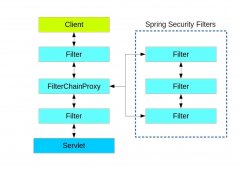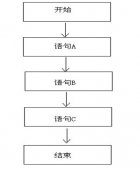前言
我们在使用 JDBC 时, 如果把所有的 SQL 语句全写在 Java 文件中, 由于 Java 不支持 Here Document, 多行字符串要么用加号, 要么用 Java 8 的 String.join() 方法来连接, 同时不能对 SQL 语句进行语法加亮, 所以这样的 SQL 字符串阅读性很差. 别说为何不用 Hibernate 之类的而不直接写原始的 SQL 语句, 在操作复杂的系统时还是会用到 JdbcTemplate 吧.
所以我们希望能把 SQL 语句写在单独的 *.sql 文件里, 这样很多编辑器就能语法高亮显示, 或在输入时还能得到智能提示.
有种办法是把 *.sql 用作为属性文件, 那么在其中定义多行的 SQL 语句时就得这样
|
1
2
3
|
select.user=select id, firstname, lastname, address \ from users \ where id=? |
加载后就能用 getProperty("select.user") 来引用相应的语句了. 属性文件的换行与 Bash 一样, 也是用 \, 但如此, 则 *.sql 并非一个纯粹的 SQL 文件, 不能正确的进行语法加亮, 一旦写上 SQL 的注释 -- 就更是在添乱了.
所以我们的第二个方案是: 首先 *.sql 就该是一个真正的 SQL 文件, 而不是伪装的属性文件, 为了能在程序中引用每一条 SQL 语句, 我们该如何表示各自的 Key 呢? 这里的灵感仍然是来自于 Linux Shell, 在 Linux Shell 中指定执行环境的用了特殊的注释方式 #!, 如
|
1
2
|
#!/bin/bash#!/usr/bin/env python |
依葫芦画瓢, SQL 的标准单注释是 --, 因而我们也创建一个特别的注释 --!, , 其后的字符串就是接下来 SQL 语句的 Key.
举例如下
|
1
2
3
4
5
6
7
|
--!select.userselect id, firstname, lastname, address from users where id=?--!update.userupdate ........ |
--! 之后是 key select.user, 往下在未到文件结束, 或是遇到下一个 --! 之前就是这个 key 对应的完整 SQL 语句的内容.
本文以 Spring 项目为例来演示如何应这个 SQL 文件, 其实在其他类型的 Java 项目中同样可以借鉴.
因为这是一个真正的 SQL 文件, 所以在 Spring 中我们无法直接作为属性文件来加载. 假设我们把该文件存储为 src/resources/sql/queries.sql, 因此我们不能直接用
|
1
2
|
@PropertySource(value = "classpath:sql/queries.sql")public class AppConfig { ...... } |
加载该文件.
幸好 PropertySource 注解还有一个属性 factory, 类型为 PropertySourceFactory, 这就是我们作文章的地方, 马上着手自定义一个 SqlPropertySourceFactory, 在其中总有办法把一个 *.sql 的内容转换为 Properties. 因此将来我们要加载 sql/queries.sql 文件所用的注解形式就会是
|
1
2
|
@PropertySource(value = "classpath:sql/queries.sql", factory = SqlPropertySourceFactory.class)public class AppConfig { ......} |
接下来就是本文的关键, 看看 SqlPropertySourceFactory 的实现
SqlPropertySourceFactory.java
|
1
2
3
4
5
6
7
8
9
10
11
12
13
14
15
16
17
18
19
20
21
22
23
24
25
26
27
28
29
30
31
32
33
34
35
36
37
38
39
40
41
42
43
44
45
46
47
48
49
50
51
52
|
package cc.unmi; import org.springframework.core.env.MapPropertySource;import org.springframework.core.env.PropertySource;import org.springframework.core.io.support.EncodedResource;import org.springframework.core.io.support.PropertySourceFactory; import java.io.BufferedReader;import java.io.IOException;import java.util.*;import java.util.stream.Collectors; public class SqlPropertySourceFactory implements PropertySourceFactory { private static final String KEY_LEADING = "--!"; @Override public PropertySource<?> createPropertySource(String name, EncodedResource resource) throws IOException { Deque<Pair> queries = new LinkedList<>(); new BufferedReader(resource.getReader()).lines().forEach(line -> { if (line.startsWith(KEY_LEADING)) { queries.addLast(new Pair(line.replaceFirst(KEY_LEADING, ""))); } else if (line.startsWith("--")) { //skip comment line } else if (!line.trim().isEmpty()) { Optional.ofNullable(queries.getLast()).ifPresent(pair -> pair.lines.add(line)); } }); Map<String, Object> sqlMap = queries.stream() .filter(pair -> !pair.lines.isEmpty()) .collect(Collectors.toMap(pair -> pair.key, pair -> String.join(System.lineSeparator(), pair.lines), (r, pair) -> r, LinkedHashMap::new)); System.out.println("Configured SQL statements:"); sqlMap.forEach((s, o) -> System.out.println(s + "=" + o)); return new MapPropertySource(resource.toString(), sqlMap); } private static class Pair { private String key; private List<String> lines = new LinkedList<>(); Pair(String key) { this.key = key; } }} |
我们定义的 src/resources/sql/queries.sql 文件内容如下:
|
1
2
3
4
5
6
7
8
9
10
11
12
13
14
15
16
|
--external queries in this file --!select_users_by_idselect id, firstname, lastname, address from users where id=? --!add_userinsert users(id, firstname, lastname, address) values(DEFAULT, ?, ?, ?)-- --!no_statement--- --!updateupdate users set firstname=? where id=? |
最后是如何应用它, 我们以 SpringBoot 的方式来启动一个 Spring 项目
DemoApplication.java
|
1
2
3
4
5
6
7
8
9
10
11
12
13
14
15
16
17
18
19
20
21
22
23
24
25
26
27
28
29
30
31
32
33
34
35
|
package cc.unmi; import org.springframework.beans.factory.annotation.Value;import org.springframework.boot.SpringApplication;import org.springframework.boot.autoconfigure.SpringBootApplication;import org.springframework.context.EnvironmentAware;import org.springframework.context.annotation.Bean;import org.springframework.context.annotation.PropertySource;import org.springframework.core.env.Environment; @SpringBootApplication@PropertySource(value = "classpath:sql/queries.sql", factory = SqlPropertySourceFactory.class)public class DemoApplication implements EnvironmentAware { private Environment env; @Value("${add_user}") private String sqlAddUser; @Bean public String testBean() { System.out.println("SQL_1:" + env.getProperty("select_users_by_id")); System.out.println("SQL_2:" + sqlAddUser); return "testBean"; } public static void main(String[] args) { SpringApplication.run(DemoApplication.class, args); } @Override public void setEnvironment(Environment environment) { env = environment; }} |
既然已转换为普通的属性了, 所以可以通过表达式 ${key} 或 env.getProperty("key") 来引用它们.
执行上面的代码, 输出如下:
|
1
2
3
4
5
6
7
8
9
10
|
Configured SQL statements:select_users_by_id=select id, firstname, lastname, address from users where id=?add_user=insert users(id, firstname, lastname, address) values(DEFAULT, ?, ?, ?)update=update users set firstname=? where id=?SQL_1:select id, firstname, lastname, address from users where id=?SQL_2:insert users(id, firstname, lastname, address) values(DEFAULT, ?, ?, ?) |
就这么简单. 当然那个 *.sql 文件最好是写得严谨一些, 我们可以将来对 SqlPropertySourceFactory 进行逐步完善以应对更多的可能. 不管怎么说它是一个真正的 SQL 文件, 在代码中也能像任何别的属性那么方便的引用其中定义的 SQL 语句了.
总结
以上就是这篇文章的全部内容了,希望本文的内容对大家的学习或者工作能带来一定的帮助,如果有疑问大家可以留言交流。
原文链接:http://unmi.cc/spring-external-sql-statements/













